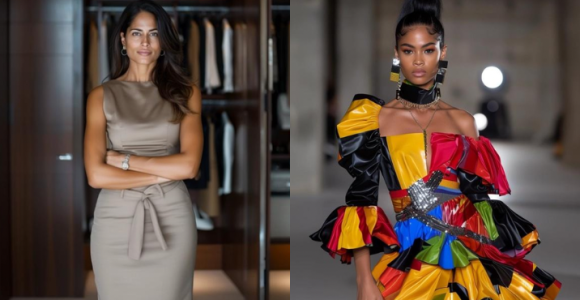When it comes to creating stylish and unique outfits, understanding color combinations is a game-changer. The color wheel is a simple yet powerful tool that helps you make sense of how colors work together, allowing you to build harmonious, bold, or playful looks with confidence. In this guide, we’ll explore six beginner-friendly color schemes you can use to transform your wardrobe.

1. Monochromatic: You can start from here
Monochromatic outfits focus on a single color in its different tints, tones, and shades. This approach creates a clean, cohesive, and elegant look.
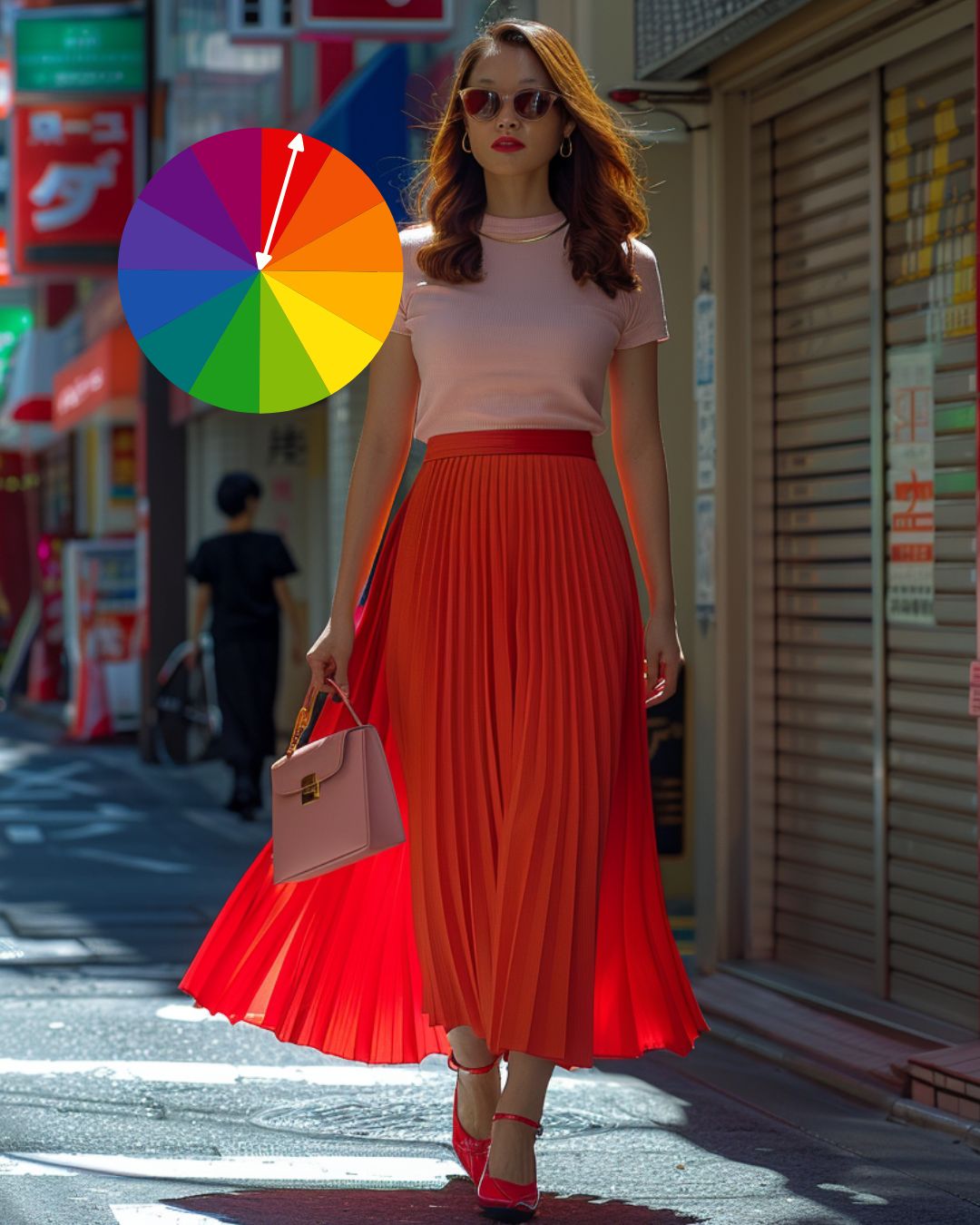
For example, pair a light blue blouse, dusty blue pants, and a deep blue jacket. The key is to vary the intensity of the color to add depth and interest without stepping out of one color family.
2. Analogous: think about harmony
Analogous colors sit next to each other on the color wheel, like yellow, orange, and red. This combination creates a harmonious look, perfect for when you want to add color but keep things subtle.
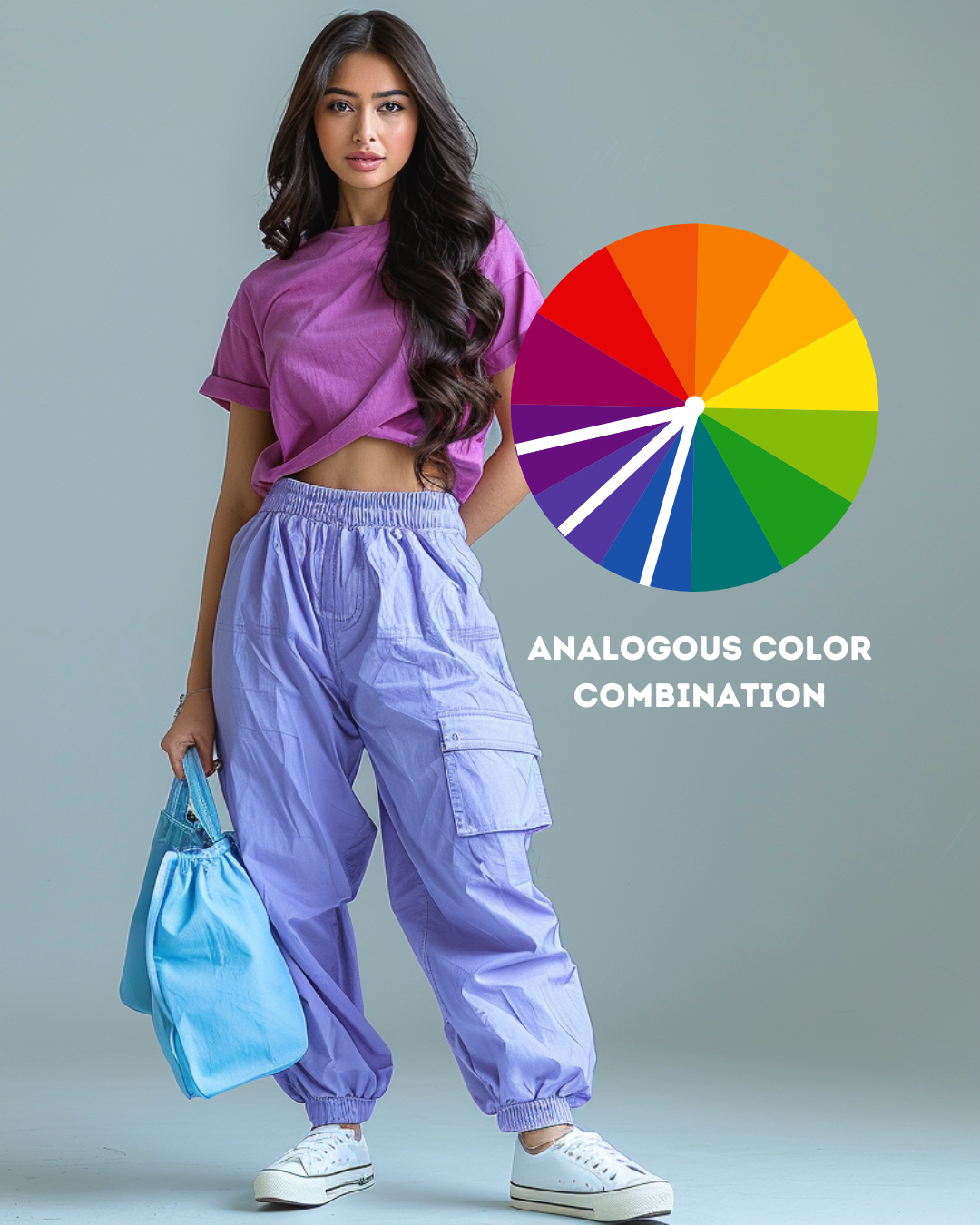
Try pairing an orange sweater with mustard-yellow pants and a red scarf for a soft gradient effect. Analogous schemes are great for creating a warm, blended vibe.
3. Complementary: Bold Contrast
Complementary colors are opposite each other on the color wheel, such as blue and orange, or purple and yellow. These combinations are high-contrast and attention-grabbing, making them perfect for statement looks.
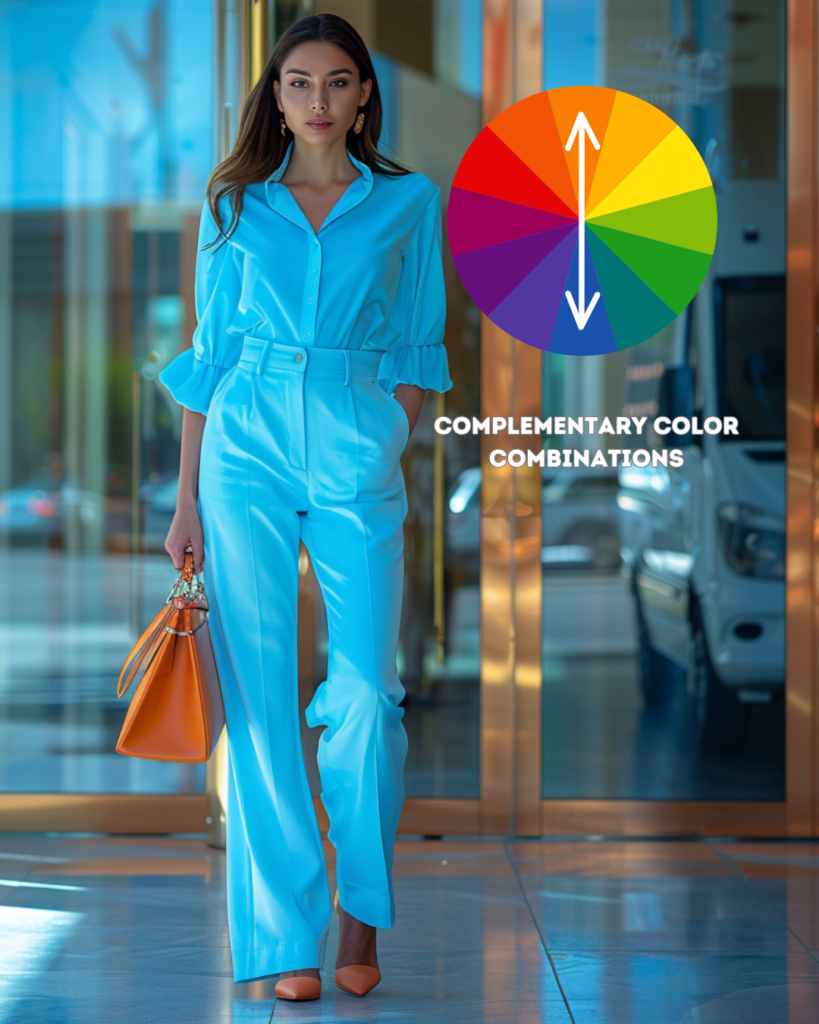
For example, you could pair a royal blue dress with orange heels or a green blazer with a red handbag. Complementary colors add vibrancy and energy to your outfit.
4. Triadic: A Playful Move
Triadic color schemes involve three colors evenly spaced around the color wheel, such as red, yellow, and blue. This combination is vibrant and dynamic but can be balanced by using one dominant color and two as accents.
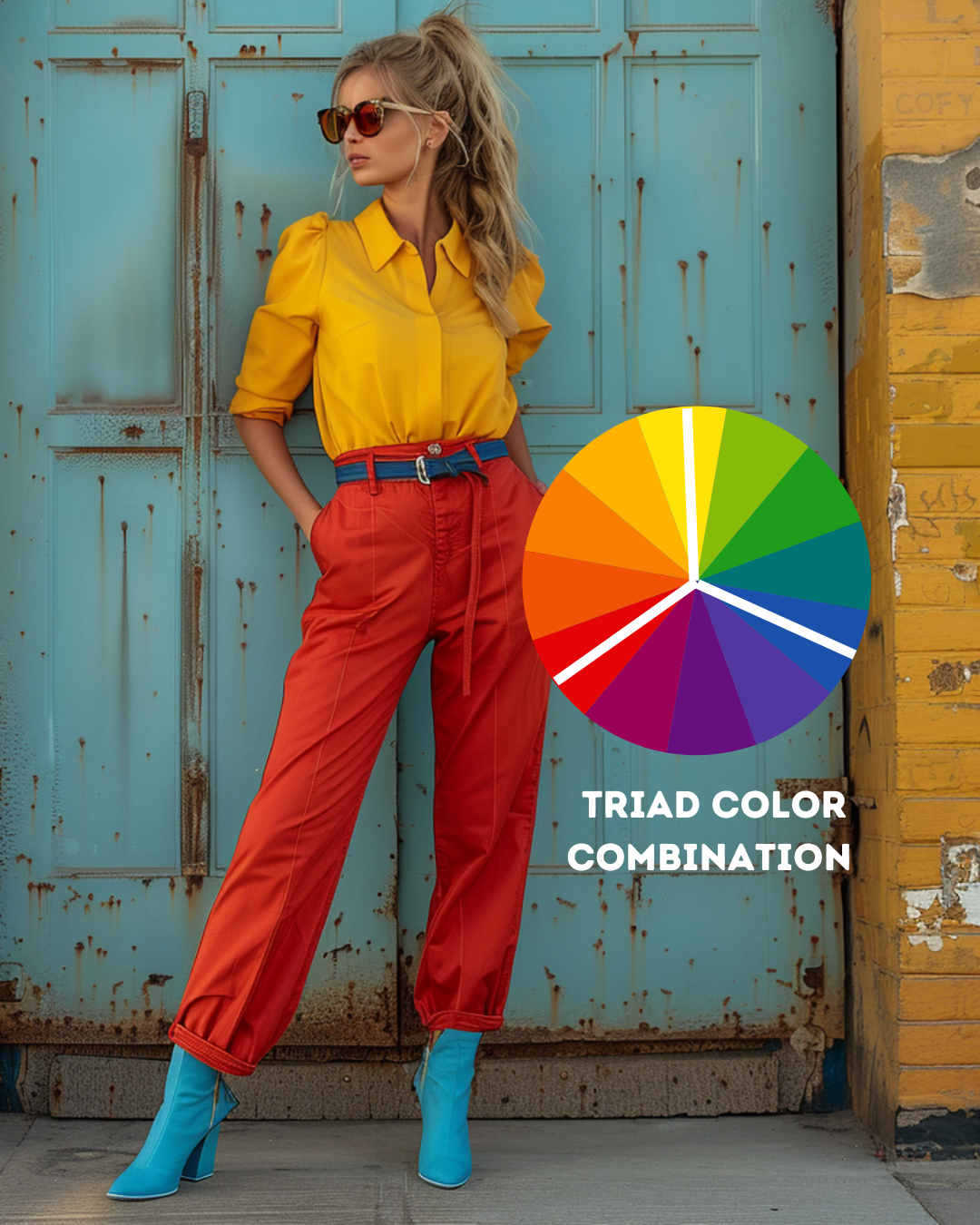
For instance, a blue dress with a red belt and yellow shoes creates a playful yet balanced look. Triadic schemes work well when you want to express creativity through color.
5. Neutrals with a Color Pop: Let One Color be the Hero
Using neutral tones like white, black, grey, or beige as a base and adding one pop color creates a polished and chic outfit.
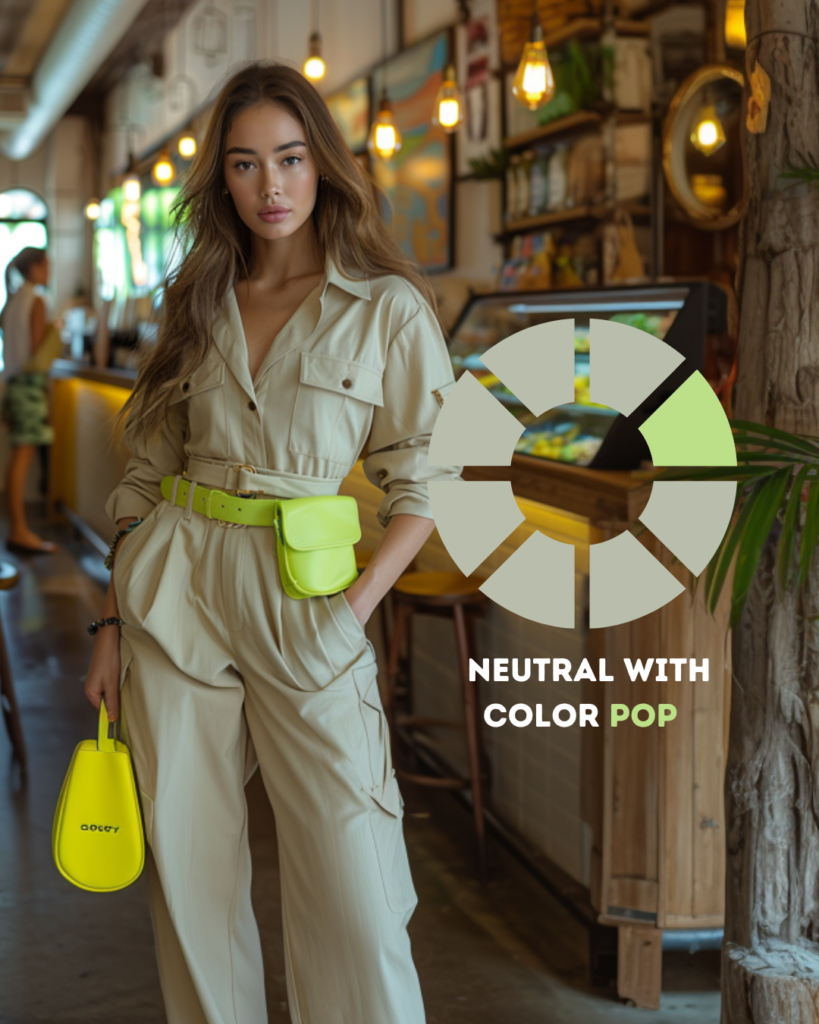
For example, try pairing a white blouse, grey trousers, and a bright red bag or shoes. This approach is perfect for beginners who want to add just a touch of color to their wardrobe without going overboard.
6. Incomplete Triad: Subtle Contrast
An incomplete triad uses two colors from a triadic scheme instead of all three, making it a more understated choice.
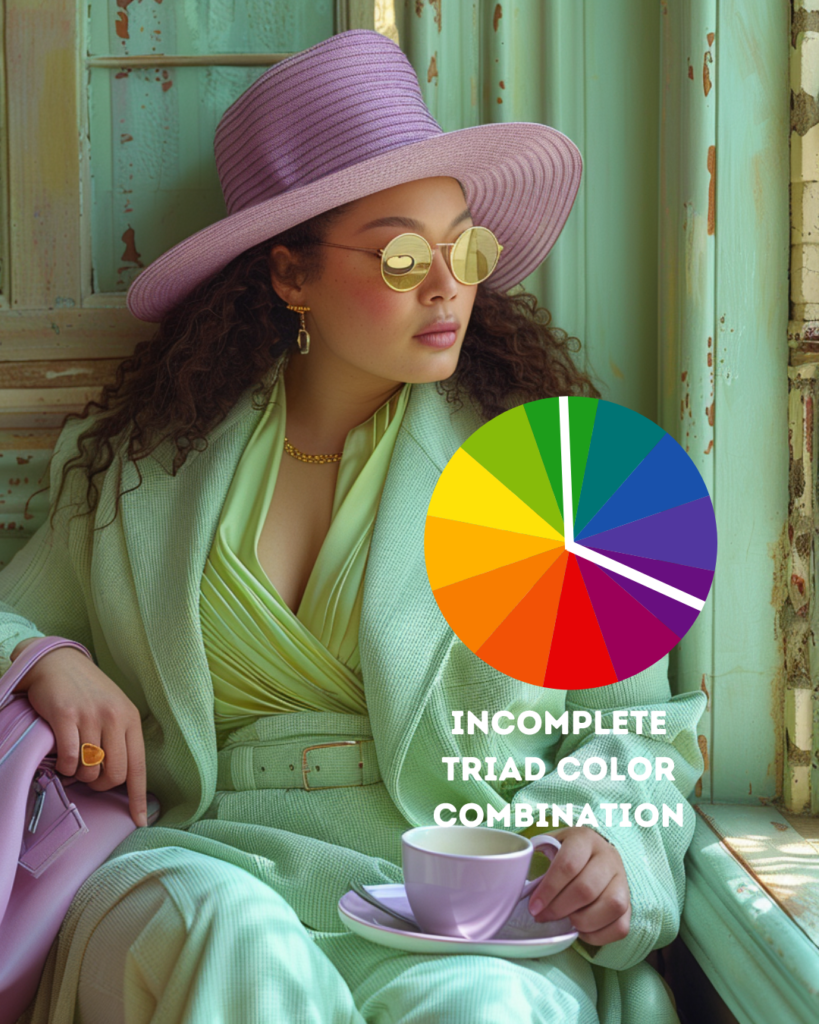
For example, teal and coral (leaving out yellow) create a stylish yet harmonious outfit. This scheme is ideal for those who want to experiment with color but prefer something less bold.
How to Get Started with Color Combinations
1. Pick a Scheme: Choose one of the six schemes based on your personal style or mood.
2. Use the Color Wheel: Identify the colors you want to use and how they work across the wheel.
3. Experiment: Start small by incorporating one or two colors, then build up confidence with more complex combinations.
Ready to dive deeper into color combinations? Check out my Pinterest mood board for more outfit inspiration using the color wheel. Whether you’re a beginner or just looking to refresh your style, the possibilities are endless!
Marcela Londono


